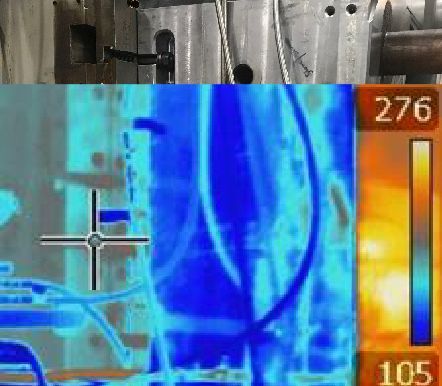
Die Casting is a thermal process. The casting die removes heat from the molten aluminum and creates a casting. However the first step is to get molten aluminum to the far side of the die before it solidifies. Usually this is accomplished by rapid injection into the die. For dies creating parts with long fill paths like the 3500 ton structural casting die the picture it is also necessary to have a warm die surface. A thermal barrier to transfering heat to the cover die naturally occurs due to shinkage due to solidifaction. My guess is that the casting is no longer in contact with the cover die surface beyond half way into the dwell time. Accordingly the majority of the heat of fusion is transferred into the ejector die and slides. The net result is many cover dies require oil heating. This is especially true for thin wall structural castings with long fill paths. Since oil heaters only delivery 1/10 of the heat input of the molten metal we also need to engineer die insulation. The 100 degree F outer holder temperature due to induced convective cooling is wonderful on the ejector side where we are trying to get rid of heat. The same cooling on the cover side adds heat input power requirements to the cover side oil heating units. More practical insulation used in the example picture is implemented as a cover platen face plate. This element reduces heat tranfer to the cover platen for every die run the machine. Otherwise the cover platen would be 50 degree hotter assuming that larger oil heating units were used.
